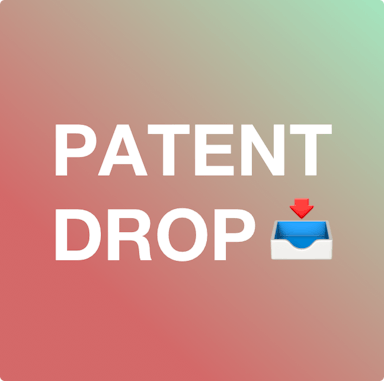Job details
![Newsletter form background]()
Art Director
Overview:
We have a simple belief — Unexpected Works. It means that the best idea is the one you never saw coming. The thing that catches you so off guard that you can‘t look away. And the only path to genuinely unexpected works is through creativity. Not just what passes for creativity because it answers a brief, looks the part and helps everyone sleep at night. But creativity that is foreign, surprising and interesting enough to cause jaws to drop and sales to soar. It’s having the fresh perspective and raw energy to bring something into the world that no one’s ever seen before. We’re talking about the courage to shake things up and maybe even tear a few things down. And knowing that what most would call the finish line is where the real work starts. We believe in people, product, and profit, in that order. For us, people always come first. They’re the soul of our agency. It takes amazing folks to make amazing work. That’s why we make sure everyone who comes through the door is as great as the people who are already here. It’s also why we constantly strive to build diverse teams where everyone brings something unique to the table. Because you can’t make the unexpected if you only work with the usual suspects. By bringing together diverse thinkers with different backgrounds and perspectives, we validate Bill Bernbach’s notion that an idea can turn to dust or magic, depending on the talent that rubs against it. So, come be part of the magic.
Art directors oversee the artistic design of advertisements and print materials, as well as the filming of television commercials. They are the decision makers who are responsible for the quality of the finished product. The art director chooses a photographer, an illustrator, models, and any props necessary for an ad. If a print ad comes back from the printer with an imperfection, the art director is responsible for retouching it.
Responsibilities:
We have a simple belief — Unexpected Works. It means that the best idea is the one you never saw coming. The thing that catches you so off guard that you can‘t look away. And the only path to genuinely unexpected works is through creativity. Not just what passes for creativity because it answers a brief, looks the part and helps everyone sleep at night. But creativity that is foreign, surprising and interesting enough to cause jaws to drop and sales to soar. It’s having the fresh perspective and raw energy to bring something into the world that no one’s ever seen before. We’re talking about the courage to shake things up and maybe even tear a few things down. And knowing that what most would call the finish line is where the real work starts. We believe in people, product, and profit, in that order. For us, people always come first. They’re the soul of our agency. It takes amazing folks to make amazing work. That’s why we make sure everyone who comes through the door is as great as the people who are already here. It’s also why we constantly strive to build diverse teams where everyone brings something unique to the table. Because you can’t make the unexpected if you only work with the usual suspects. By bringing together diverse thinkers with different backgrounds and perspectives, we validate Bill Bernbach’s notion that an idea can turn to dust or magic, depending on the talent that rubs against it. So, come be part of the magic.
Art directors oversee the artistic design of advertisements and print materials, as well as the filming of television commercials. They are the decision makers who are responsible for the quality of the finished product. The art director chooses a photographer, an illustrator, models, and any props necessary for an ad. If a print ad comes back from the printer with an imperfection, the art director is responsible for retouching it.
- Responsible for not only the "look" of an ad but is also part of a creative team responsible for developing the very concept. An art director and a copywriter (who writes the ads) may decide on an advertising concept together. Then they determine how the ad will look and what it will say.
- To create a "print" ad—one that appears in a magazine or a newspaper or on a billboard—the art director creates a rough layout using a computer. The layout shows where the copy will go, which fonts and colors will be used, and what the picture will look like. At this stage, the layout must be approved by the client. Once a rough layout for an ad is approved, the art director uses all the resources of the agency to produce the finished ad.
- Work begins in a large, open work area known as the bull pen, where the art director supervises a team of artists who work up the rough layout of an ad, refine it, and put it together on the computer. Assistants scale photographs and illustrations to the proper size and decide on the typeface. They run the copy and the photographs through the computer programs to create the pages as they will appear in print.
- The client's first look at a television ad is in the form of a storyboard—a kind of comic-strip version of the action and dialogue of the ad. The art director draws the storyboard as a model for the filmed ad. Many people help prepare an ad for television. The art director and the copywriter then join forces with a producer, who handles the budget and the technical details. All three choose a director to film or tape the ad. The art director also helps to cast the actors for a television advertisement—they must have the "look" the art director wants.
- A portfolio containing a collection of best work
- Training in graphic design, including courses in typography, design, layout, and photography.
- Ability to work under constant pressure as there are always deadlines to meet, layouts to deliver to the printer, or commercials that must be taped as soon as possible. (Delays in the production of a television commercial can be very expensive, and the art director is ultimately responsible for having everything ready on time and staying until the shooting is finished.)
- Expertise in Photoshop and Illustrator is essential.
- Proficiency in Flash and Dreamweaver is strongly desired.
DDB is committed to diversity in its workforce and is proud to be an equal opportunity employer and to review all of our job postings to minimize biased language. DDB Chicago does not make hiring or employment decisions on the basis of race, color, religion, creed, gender, national origin, age, disability, veteran status, marital status, pregnancy, sex, gender expression or identity, sexual orientation, citizenship, or any other basis protected by applicable local, state or federal law.
 By
DDB
By
DDB
In 1949, three enterprising gentlemen, Bill Bernbach, Ned Doyle and Maxwell Dane gave the advertising industry a wake-up call. They introduced a new approach to marketing that relied on insight into human nature, respect for the consumer, and the ...
13 jobsFUNDING
INDUSTRY
TEAM SIZE
LOCATION
DATE POSTED
June 10, 2023
Subscribe to Rise newsletter
Career Copilot
Want to see a list of jobs tailored to
you, just ask me below!
you, just ask me below!



